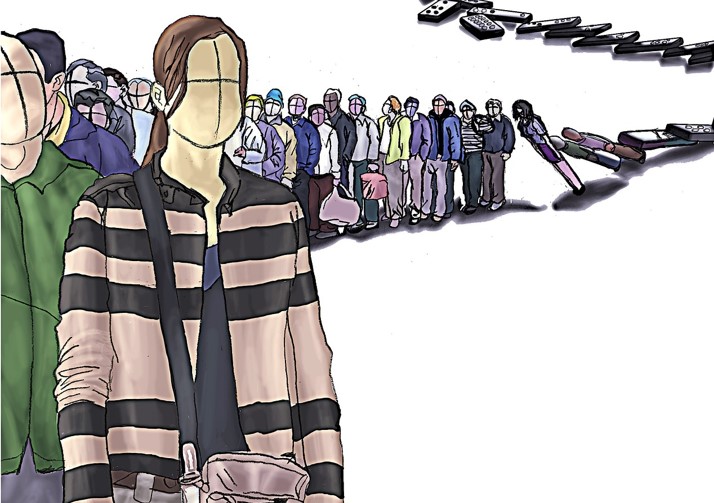Getting Queue Measurement Very Wrong
Getting Queue Measurement Very Wrong
By Gary Angel
|September 28, 2018

Measuring queue times and understanding queue management performance are a core use-case for in-store journey measurement. Lines aren’t just a pain-in-the-ass for shopper and customers, they’re a significant barrier to conversion and a big driver of in-store customer satisfaction issues. But before you can use analytics to improve your queue management, you have to make sure you can accurately measure the problem. In my last post, I worked through the real-world challenges that make good measurement hard to do.
The two biggest issues I called out were grouping and shopping congestion around the cash-wrap. Grouping impacts almost every queue. People shop (and do stuff) in groups. But people who queue together don’t always stay together. It’s common behavior to leave one member of the group in line while others drift in and out. This plays havoc with queue measurement as it can look like line abandonment (it isn’t) and it can make the time in queue look much shorter than it really it is. Shopping congestion isn’t a problem for every store or situation. In stores where the cash-wrap is set-off from most merchandising, you can reasonably assume that people in the checkout area are…checking out. But in most mall stores (and most small stores in general), the cash-wrap is often tightly integrated with merchandising. If that’s the case, then just counting people and dwell times is wildly misleading.
If you’re already doing basic line measurement and you aren’t taking account of the factors I’ve described, you might be inclined to view these as edge cases. Sure, they’re problems – but they probably don’t impact the numbers all that much, right?
Wrong.
The real world provides all sorts of edge-cases which are challenging to measure and don’t much impact your metrics. But when it comes to queue management, these aren’t edge cases. They have a huge and dramatic impact on the data.
To see how much of an impact, I had our team run some numbers comparing basic queue measurements using simple people counting and dwell times and then re-run the numbers with the DM1 platform logic built in.
Here’s a set of basic data pulled from a half-dozen mall stores:
This data was collected via measurement camera with a large bounding box drawn in front of the cash-wrap to get total checkout time (including line time) and a tight bounding box drawn in front of the cash-wrap to get transaction time. The counts and times are camera-based calculations for shoppers in the bounding box and their dwell times. The average shopper spent anywhere from a minute to 1:45 in total and the average transaction time was a little over a minute at most locations.
The big clue that this is all wrong comes from comparing this data to PoS Transactions:
In most cases, the camera counts are 4-5x the store transaction counts. Which should make you wonder about the accuracy of the queue and transaction time data as well.
Here’s the same data after we apply full cleaning logic to the data:
The cleaned data provides a very close match to the store PoS data – never varying by more than about 10% above or below. Now look at the impact on queue time measurement:
Real transactors spent 2-3x the time checking-out that the raw camera dwell times suggested. That’s not an edge case – it’s a huge difference. The impact was just as big when it came to actual transaction times:
In every case, the difference was at least on the order of 2x. And this isn’t a situation where you can just assume the data is directional. Longer camera dwell times during crowded conditions may be largely offset by more shoppers wandering in an out of the area – meaning raw camera-based queue time measurement isn’t even doing a good job picking out the times of day when lines get long and slow!
The bottom line is a simple story about a surprisingly complex problem. Straightforward measurement of dwell times and shoppers in the cash-wrap is a very poor way to measure queue performance. The data is there and it’s accurate in its own way – but proper interpretation require more than just relying on basic bounding boxes and dwell time reports.




